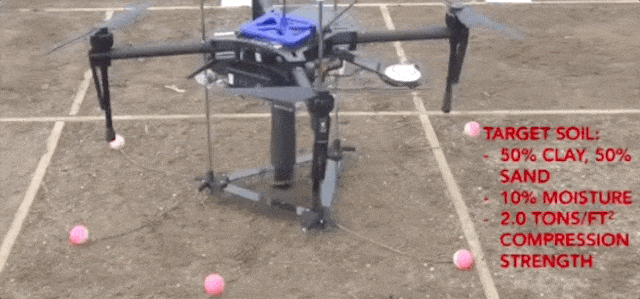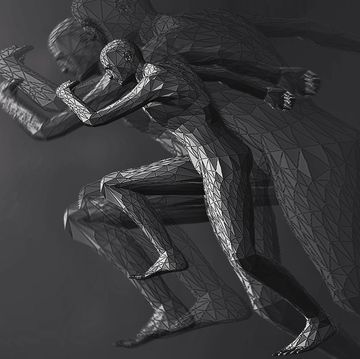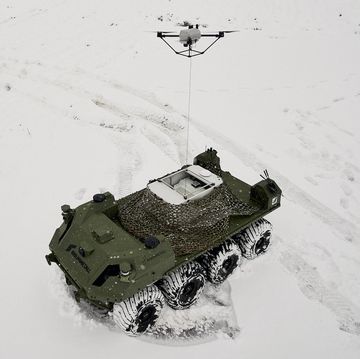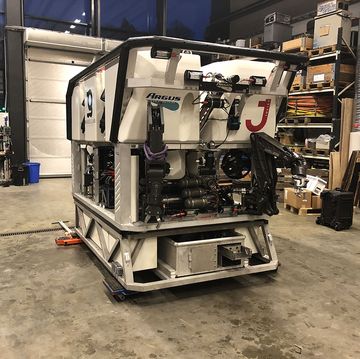Drones are primarily known for what they can do in the sky, like aerial photography or shutting down airports. A new project out of University of Nebraska–Lincoln (UNL) takes things in a different direction: This drone digs holes.
Built by UNL's NIMBUS Lab, the quadcopter is equipped with a big ol' drill that, once the drone has gingerly landed, can be used to burrow into the dirt, sand, or clay beneath it, primarily for scientific purposes.
But a digging drone isn't as easy as just strapping a drill to a quad. Drones already tend to have short battery lives, with top-shelf drones like the DJI Mavic Pro Platinum topping out at 30 minutes. Adding a giant drill that is both heavy in flight and requires energy of its own while in use only exacerbates the problem.
"Battery powered drones have very short flight times, especially when flying with a heavy load, which we are since we have our digging apparatus and sensor system," says NIMBUS codirector Carrick Detweiler, speaking to IEEE Spectrum. The NIMBUS solution? More drones.
"We need to hitch a ride on another vehicle," Detweiler says. After flying with another drone, it parachutes in. "This allows allows it to save energy for return trips. In this video we used a much larger gas powered UAS with multiple hours of flight time, but our same system could be deployed from manned aircraft or other systems."
While the drone can perform its drilling and parachuting autonomously, it needs its employment site manually selected. As far as uses, Detweiler imagines scientific research in areas with moist soil like wetlands. Federal agencies like the USDA conduct such tests to "manage shellfish stocks, plan dredging and waste disposal, and construct stable roads, bridges, docks, and dams," among other purposes.
But as crucial as infrastructure projects, waste disposal, and shellfish are, a drone like the NIMBUS driller could also find military uses. NIMBUS is funded partially by both the USDA and the Air Force Office of Scientific Research, which is actively researching UAV systems, as well as new ways to power them.
Source: TechCrunch
David Grossman is a staff writer for PopularMechanics.com. He's previously written for The Verge, Rolling Stone, The New Republic and several other publications. He's based out of Brooklyn.













